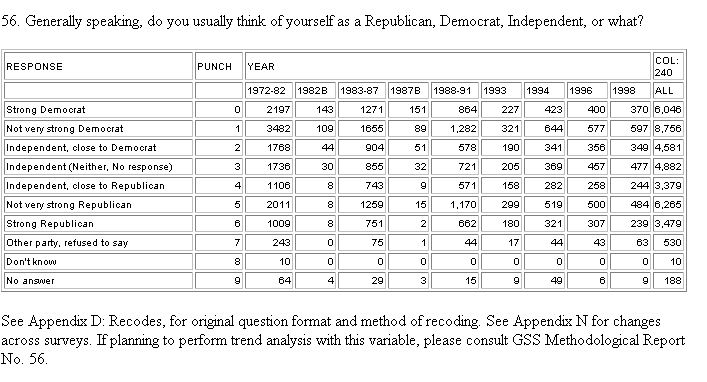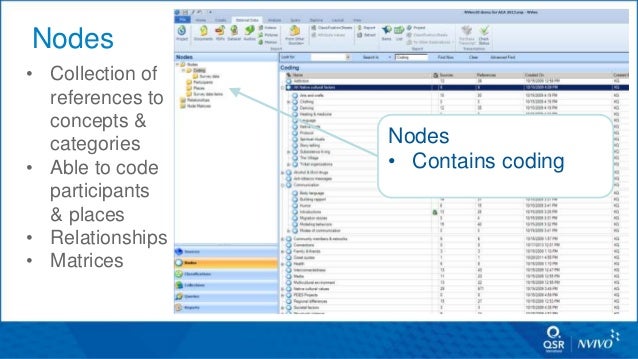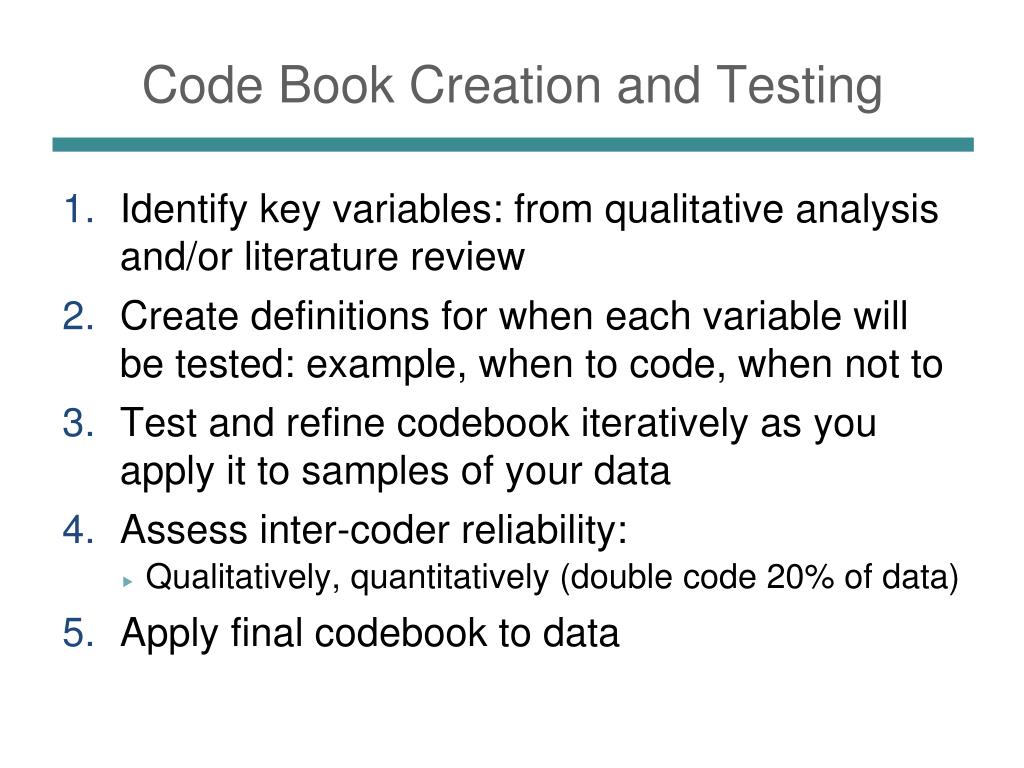
Most of the time, you’ll combine several codes into a single theme. Next, we look over the codes we’ve created, identify patterns among them, and start coming up with themes. These codes allow us to gain a a condensed overview of the main points and common meanings that recur throughout the data. As well as highlighting all the phrases and sentences that match these codes, we can keep adding new codes as we go through the text.Īfter we’ve been through the text, we collate together all the data into groups identified by code.

Qualitative codebook example code#
Each code describes the idea or feeling expressed in that part of the text.Īt this stage, we want to be thorough: we go through the transcript of every interview and highlight everything that jumps out as relevant or potentially interesting. In this extract, we’ve highlighted various phrases in different colors corresponding to different codes. The facts keep changing – it used to be called global warming. People say you should trust the experts, but who’s to say they don’t have their own reasons for pushing this narrative? I’m not saying they’re wrong, I’m just saying there’s reasons not to 100% trust them. I think the climate is changing, sure, but I don’t know why or how. An extract from one interview looks like this: Coding qualitative data Interview extract
Qualitative codebook example series#
Say we’re researching perceptions of climate change among conservative voters aged 50 and up, and we have collected data through a series of interviews.

Coding means highlighting sections of our text – usually phrases or sentences – and coming up with shorthand labels or “codes” to describe their content. This might involve transcribing audio, reading through the text and taking initial notes, and generally looking through the data to get familiar with it. It’s important to get a thorough overview of all the data we collected before we start analyzing individual items. The first step is to get to know our data. See editing example Step 1: Familiarization A latent approach involves reading into the subtext and assumptions underlying the data.Īsk yourself: Am I interested in people’s stated opinions (semantic) or in what their statements reveal about their assumptions and social context (latent)?Īfter you’ve decided thematic analysis is the right method for analyzing your data, and you’ve thought about the approach you’re going to take, you can follow the six steps developed by Braun and Clarke.A semantic approach involves analyzing the explicit content of the data.There’s also the distinction between a semantic and a latent approach: A deductive approach involves coming to the data with some preconceived themes you expect to find reflected there, based on theory or existing knowledge.Īsk yourself: Does my theoretical framework give me a strong idea of what kind of themes I expect to find in the data (deductive), or am I planning to develop my own framework based on what I find (inductive)?.An inductive approach involves allowing the data to determine your themes.There’s the distinction between inductive and deductive approaches:

Once you’ve decided to use thematic analysis, there are different approaches to consider. Different approaches to thematic analysis Pay close attention to the data to ensure that you’re not picking up on things that are not there – or obscuring things that are.

Thematic analysis is often quite subjective and relies on the researcher’s judgement, so you have to reflect carefully on your own choices and interpretations. However, it also involves the risk of missing nuances in the data. Thematic analysis allows you a lot of flexibility in interpreting the data, and allows you to approach large data sets more easily by sorting them into broad themes. To answer any of these questions, you would collect data from a group of relevant participants and then analyze it. How is gender constructed in high school history teaching?.What are non-experts’ ideas and opinions about climate change?.What are young women’s experiences on dating sites?.How do patients perceive doctors in a hospital setting?.Some types of research questions you might use thematic analysis to answer: Thematic analysis is a good approach to research where you’re trying to find out something about people’s views, opinions, knowledge, experiences or values from a set of qualitative data – for example, interview transcripts, social media profiles, or survey responses. Different approaches to thematic analysis.


 0 kommentar(er)
0 kommentar(er)
